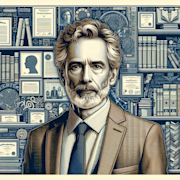From Wonderland to Reality: Decoding Lewis Carroll's Alice in Wonderland

Lewis Carroll’s Alice in Wonderland has captured the imaginations of readers for more than a century. The whimsical and nonsensical world Alice encounters has become a classic in children’s literature. However, beneath the vibrant surface lies a deeper meaning, hidden messages, and social commentary that offer a fascinating glimpse into the Victorian era. In this blog post, we embark on a journey to decode the layers of symbolism in Carroll’s masterpiece and explore the connection between Wonderland and reality.
Section 1: The Rabbit Hole of Imagination
One of the most iconic scenes in Alice in Wonderland is when Alice follows the White Rabbit down the rabbit hole, plunging into a world of adventure and confusion. This descent into the unknown represents the power of imagination and the escape from the confines of reality.
The Power of Imagination
Carroll depicts Wonderland as a realm where imagination reigns supreme. Alice’s ability to adjust her size at will, talk to animals, and navigate bizarre landscapes showcases the boundlessness of imagination. Carroll’s emphasis on imagination encourages readers to explore their own creative potential.
Escaping Reality
Alice uses Wonderland as an escape from her mundane reality, highlighting the desire to break free from societal constraints. The character of Alice represents the Victorian Era’s struggle with the rigid social norms and expectations imposed on women. Wonderland becomes a safe haven where Alice can challenge these limitations.
Section 2: Dissecting the Mad Tea Party
The Mad Tea Party is one of the most memorable and peculiar encounters in Alice in Wonderland. This perplexing scene filled with nonsensical conversations between Alice and the eccentric tea party attendees holds symbolic meanings that go beyond mere madness.
Victorian Social Customs
During the Victorian era, tea parties were a significant part of the upper-class social scene. However, Carroll satirizes this tradition by exaggerating the formalities and rules observed during tea parties. The tea party’s chaos and disregard for societal norms reflect Carroll’s critique of the rigid social etiquette of the time.
Challenging Authority
The Hatter’s famous riddle, “Why is a raven like a writing desk?” illustrates Carroll’s rebellion against authority figures. The absurdity of the riddle suggests that questioning authority and embracing unconventional thinking can lead to new perspectives and imaginative solutions. Carroll’s riddle symbolizes the importance of individualism and independent thought.
Section 3: The Red Queen’s Reign of Power
The Red Queen’s character embodies the idea of power and its corrupting influence. Her tyrannical rule in Wonderland serves as a satirical representation of authority figures in the Victorian era.
Critiquing Victorian Monarchy
Born in the era of Queen Victoria’s reign, it is no surprise that Carroll subtly criticizes the monarchy through the Red Queen. Her constant demand for instant obedience and her irrational nature highlight the arbitrary power held by those in authority during the Victorian era.
The Chess Game: Social Mobility
In Alice Through the Looking-Glass, the Red Queen engages Alice in a never-ending chess game. This chess game represents the struggle for social mobility during the Victorian era. Alice’s constant effort to move forward but remaining in the same position symbolizes the limited opportunities for individuals to climb the social ladder.
Section 4: Alice’s Growth and Self-Discovery
Throughout Alice’s journey, she undergoes significant personal growth and self-discovery. Carroll uses the trials and tribulations of Wonderland as a metaphor for Alice’s path towards maturation.
Navigating Identity and Self-Expression
Alice’s fluctuations in size and multiple interactions with different characters highlight the struggle to establish her identity in a changing world. Growing and shrinking mirror the emotional upheavals experienced during adolescence, where self-expression and understanding one’s place in society become paramount.
Confronting Absurdity
Alice encounters countless absurd situations and conversations in Wonderland. Her ability to navigate through these bizarre circumstances with logic and reason represents the importance of critical thinking and rationality when faced with the nonsensical aspects of life. This emphasizes Carroll’s message that one must confront and challenge the absurdities of the world to grow as an individual.
Section 5: The Mirror’s Reflection
In Alice Through the Looking-Glass, Alice enters a world reflected beyond the mirror’s surface. This sequel delves deeper into the themes of duality, alternate realities, and the blurred lines between fantasy and reality.
Duality and Reflection
The mirror acts as a symbol of duality, reflecting alternate versions of reality. Alice’s journey through the looking-glass represents her exploration of different aspects of her personality and understanding the complexities of her own identity. Carroll’s focus on duality signifies the multifaceted nature of human existence.
The Illusion of Reality
Carroll challenges the notion of an objective reality through the blurred boundaries of Wonderland and the real world. The fantastical elements of Wonderland juxtaposed with Alice’s struggle to distinguish between reality and illusion highlight the subjective nature of perception.
Alice in Wonderland continues to captivate readers with its imaginative world and whimsical characters. By deciphering the hidden meanings and social commentaries woven into the narrative, we gain insights into the Victorian era’s cultural underpinnings. Carroll’s fantastical tale serves as a powerful reminder of the enduring impact of literature and its ability to unveil truths about the human condition.
As we journey through the rabbit hole with Alice, we are reminded that the boundary between reality and fantasy is often blurred, and the potential for growth and self-discovery lies within our own imaginations. Carroll invites us to embrace the quirks of life, challenge authority, and question societal norms, making Alice in Wonderland a timeless classic that continues to resonate with readers of all ages.

Johnathan Evans
Journalist
More From Classics Authority Books

Book
Around the World in Eighty Days by Jules Verne

Book
The Literary Alchemy of Coelho: The Alchemist's Quest for Personal Legend

Book
The Enduring Legacy of O. Henry: Unwrapping the Twists in Short Stories

Book
David Copperfield by Charles Dickens

Book
Robinson Crusoe by Daniel Defoe

Book
Braving the Wilderness with Jack London's The Call of the Wild





